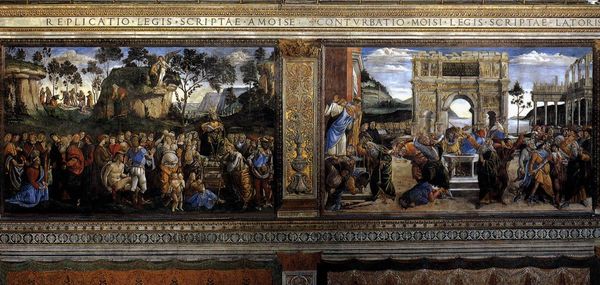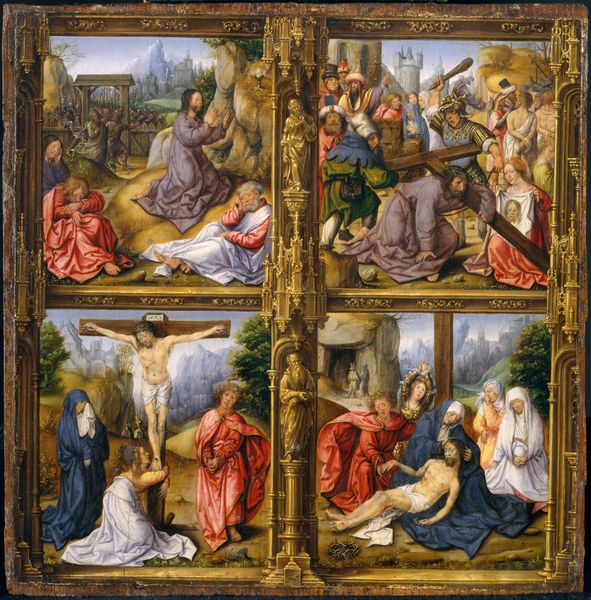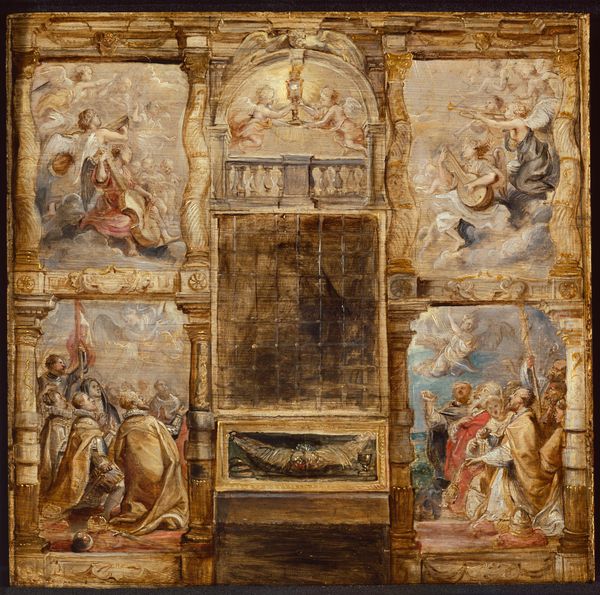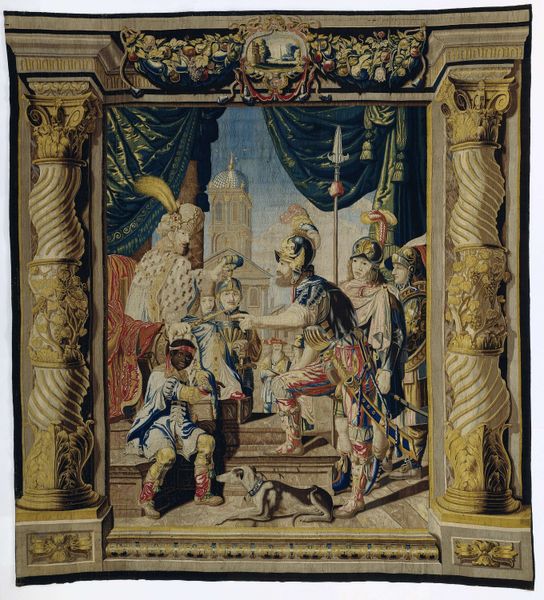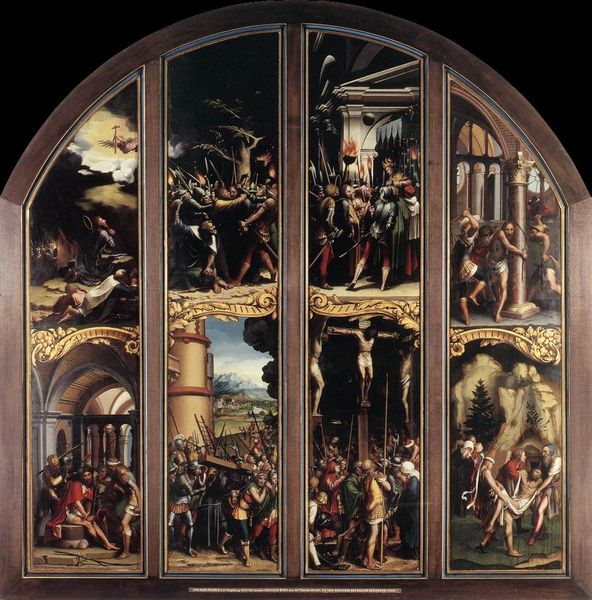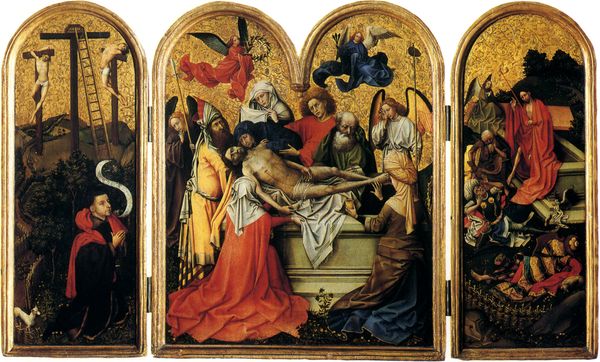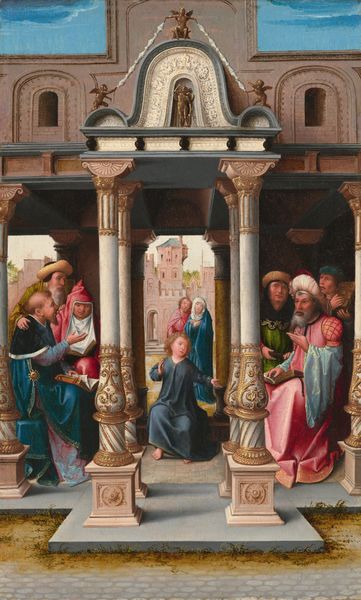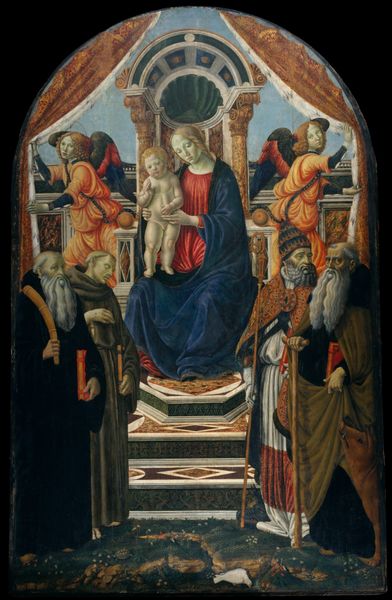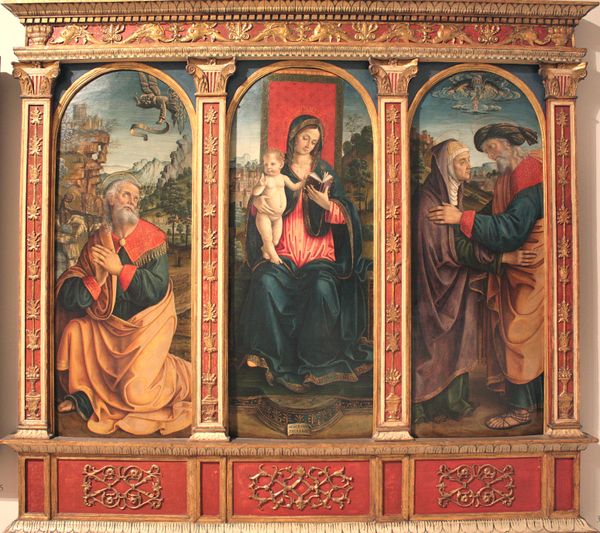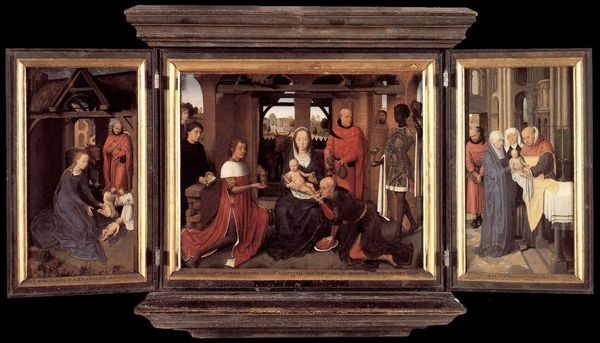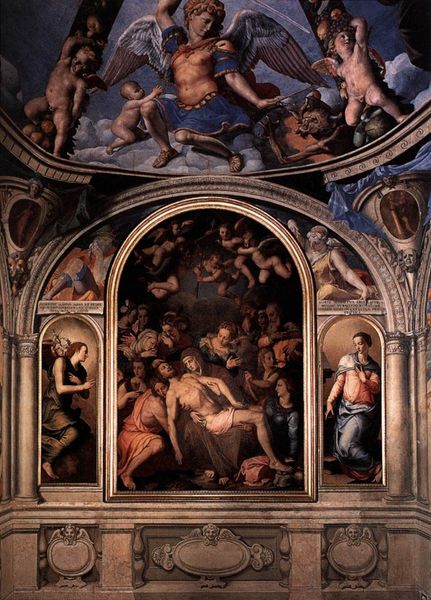
tempera, painting
#
architectural landscape
#
narrative-art
#
tempera
#
painting
#
landscape
#
holy-places
#
perspective
#
figuration
#
christianity
#
mythology
#
history-painting
#
italian-renaissance
Copyright: Public domain
Editor: So, this is Andrea Mantegna's *The Martyrdom of Saint Christopher*, painted around 1506 using tempera. It's quite a crowded scene; the architecture feels almost like a stage set for something dramatic and well...horrific, really. How do you interpret this work, especially its use of imagery? Curator: This triptych offers a complex narrative steeped in both religious symbolism and Mantegna’s own historical context. Note the classical architecture. Do you recognize how those Roman structures—arches, columns—place the narrative not just in a historical past, but consciously align it with an era of imperial power? Editor: Yes, now that you point it out, it gives a definite sense of authority, a sort of legitimization to the events unfolding. But it's also unsettling, given the violence depicted. Curator: Exactly. Violence, though terrible, could be a symbol. Think of Saint Christopher himself; he’s become an emblem of protection for travelers. Before that, though, came martyrdom. Observe how Mantegna emphasizes the human drama within a divine context. The martyrdom is brutal, undeniably, but within Renaissance iconography, it also represents spiritual transcendence. Does seeing those interconnected, perhaps contrasting layers impact your interpretation? Editor: It does. It makes me consider the duality of symbols—how something like violence can be both horrific and, within a specific framework, symbolic of something else entirely, like faith and salvation. Curator: And consider Mantegna’s skill in presenting the cultural memory; he provides not just a story, but an understanding of how that story functions within a society’s shared understanding of faith, power, and identity. It reveals cultural values over time through impactful visuals, making Mantegna an important interpreter of cultural memory. Editor: I see how Mantegna uses visual language not only to tell a story but also to create a lasting cultural symbol. Thanks.
Comments
No comments
Be the first to comment and join the conversation on the ultimate creative platform.
